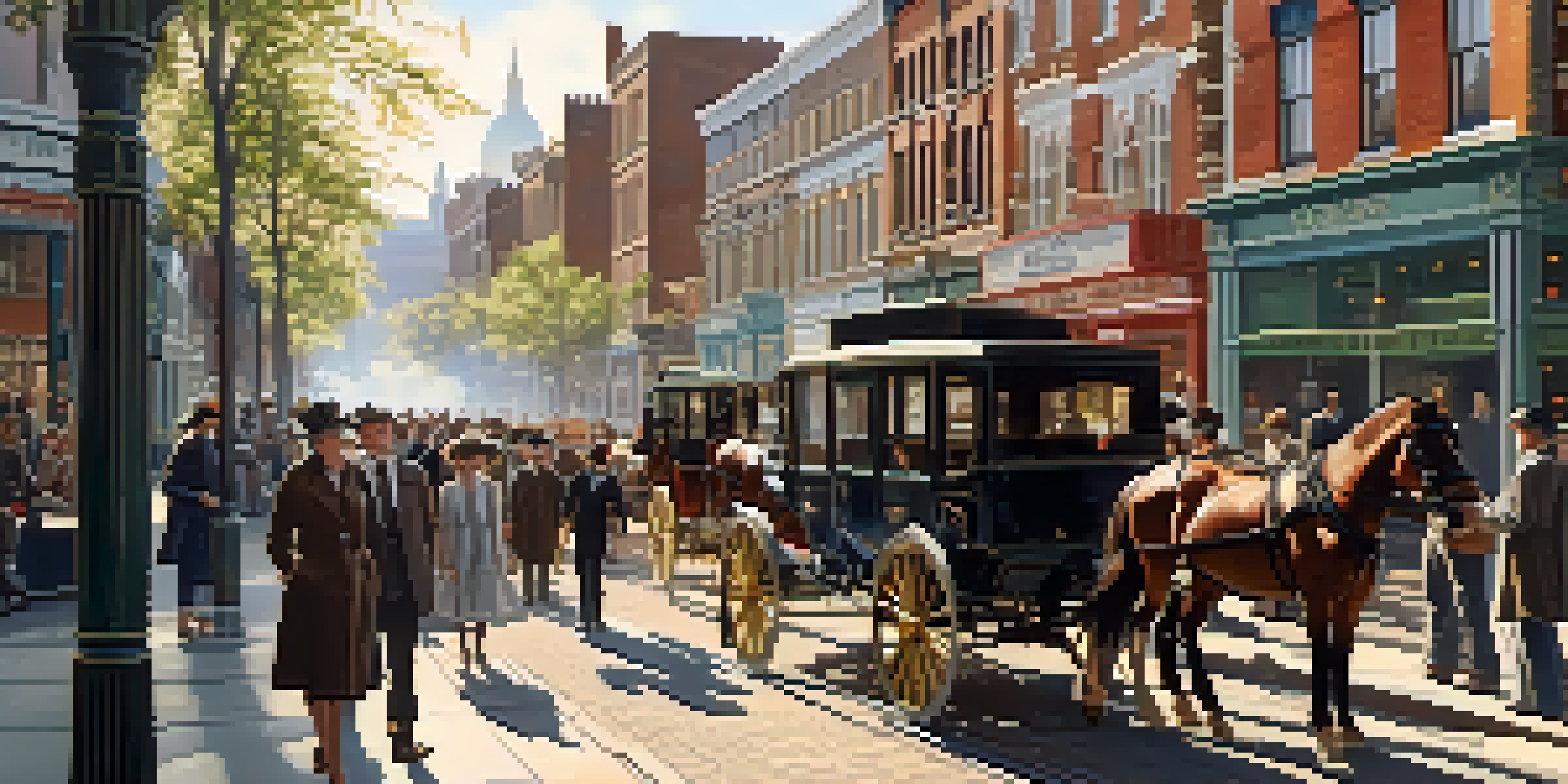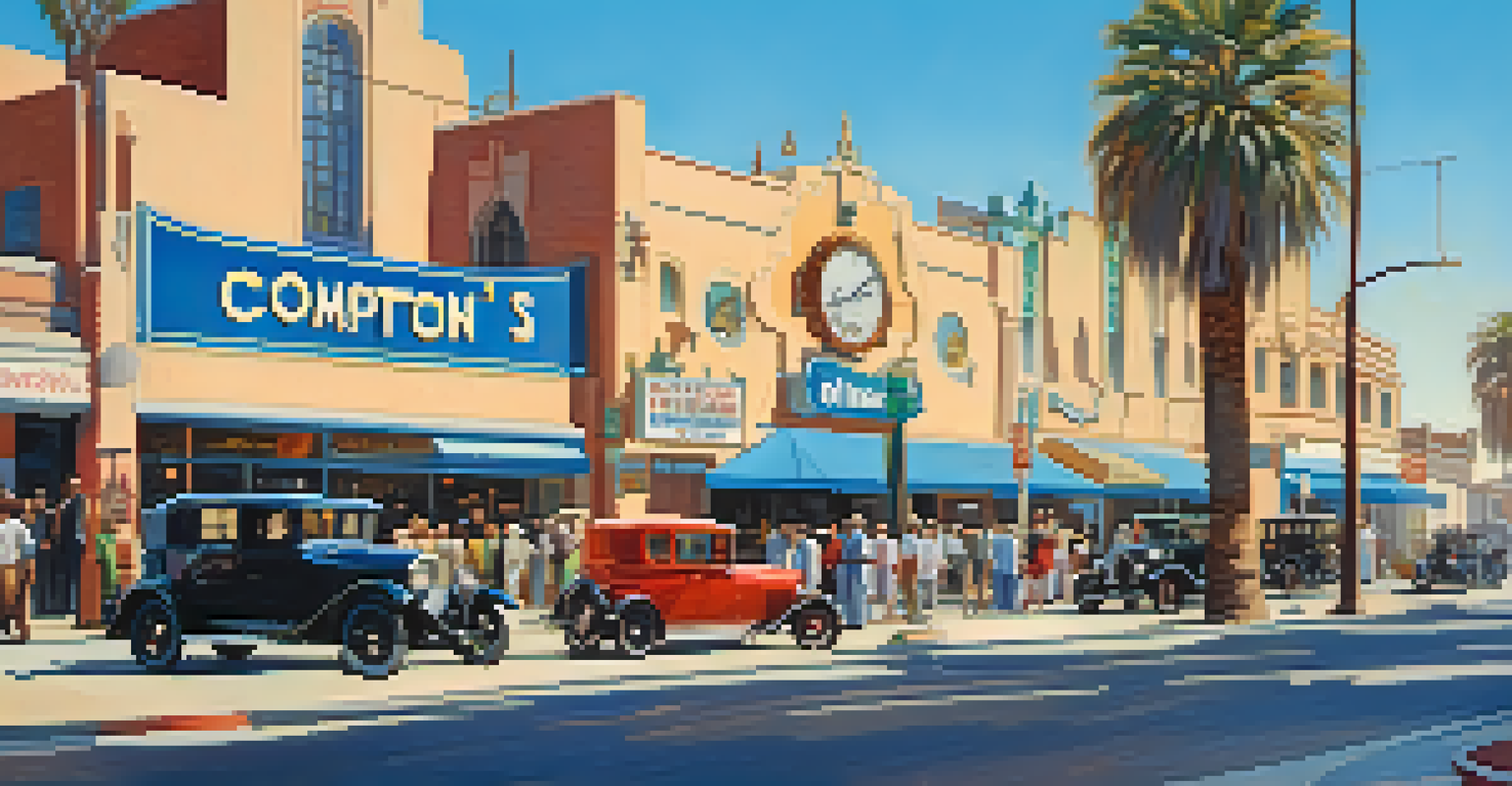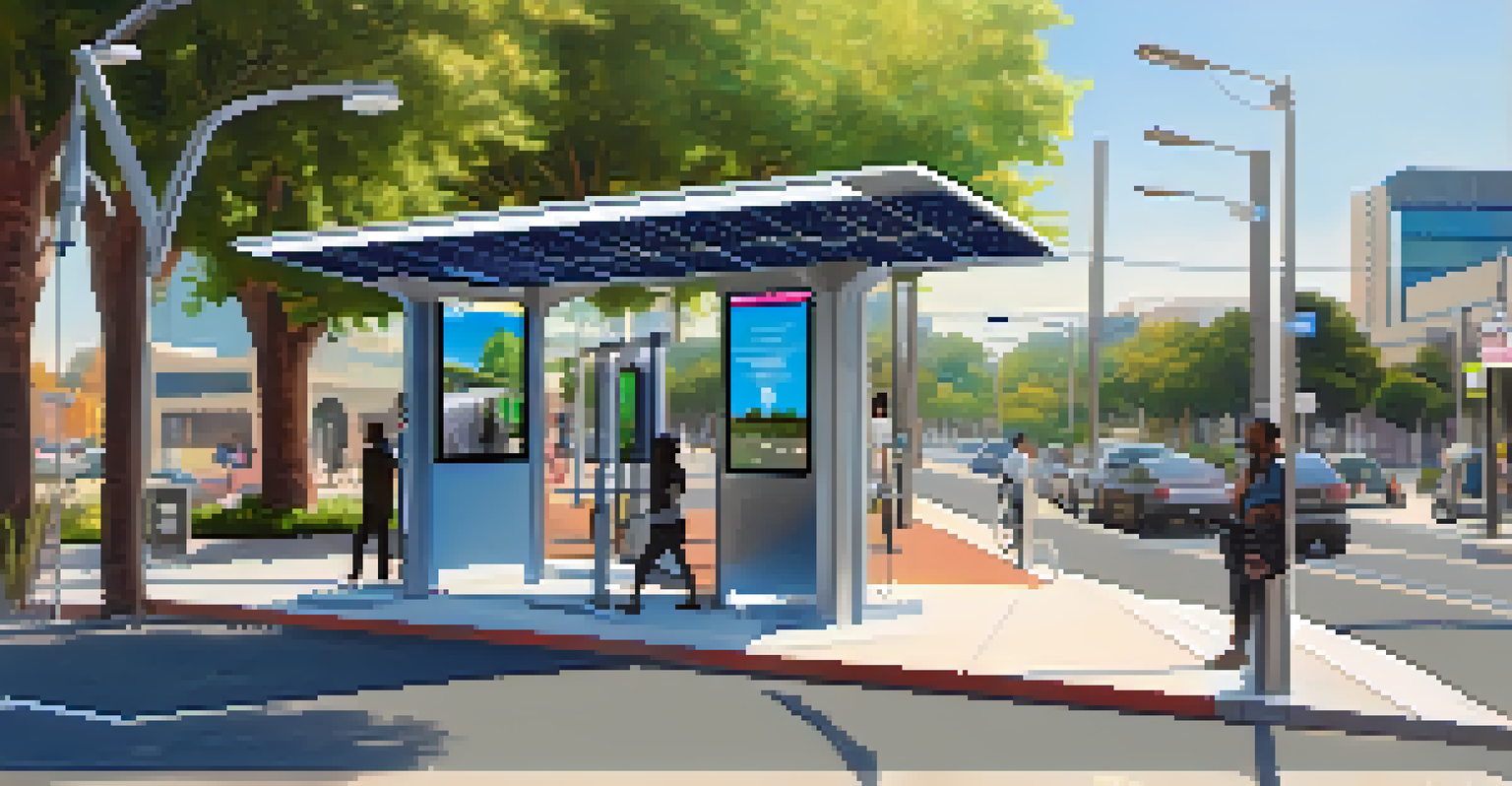The Origins of Compton's Transportation: A Historical Overview

Compton's Early Transportation: A Historical Context
In the early days of Compton, transportation was primarily dependent on horse-drawn carriages and foot traffic. The city's growth in the late 19th century was intertwined with the development of local roads, which facilitated trade and travel. As settlers moved in, the need for reliable transportation options became evident, shaping the future of Compton's infrastructure.
Transportation is the center of all economic activities, and without it, the economy stagnates.
The arrival of the Southern Pacific Railroad in the 1880s marked a significant turning point for Compton. This development not only connected the city to larger markets but also encouraged an influx of residents and businesses. The railroad became a lifeline, linking Compton to Los Angeles and beyond, and paving the way for further growth.
By the early 1900s, the establishment of streetcar lines further enhanced local mobility. These electric streetcars provided residents with an efficient means of transportation, allowing them to easily navigate the expanding city. This period laid the groundwork for Compton’s evolving transportation landscape, which would continue to adapt to the needs of its community.
The Automobile Boom: Transforming Compton's Landscape
The 1920s brought about a significant change in transportation with the rise of the automobile. As cars became more accessible, they transformed not just personal mobility but the entire landscape of Compton. Highways began to crisscross the area, which allowed residents to travel farther and faster than ever before.

This shift toward car-centric travel spurred the development of new commercial and residential areas. Gas stations, motels, and diners sprang up along major roadways, reflecting the changing needs and desires of the community. Compton’s economy began to thrive as businesses catered to the growing number of motorists.
Transportation Evolution in Compton
Compton's transportation system has evolved from horse-drawn carriages to modern public transit, reflecting the city's growth and changing needs.
However, this rapid expansion also led to challenges such as traffic congestion and the need for better road maintenance. City planners recognized the necessity of adapting infrastructure to accommodate the increasing number of vehicles. This period marked a pivotal moment in the evolution of Compton's transportation system, setting the stage for future developments.
Public Transportation: The Rise of Buses in Compton
As the mid-20th century approached, public transportation became more prominent in Compton. The introduction of bus services provided residents with an affordable and efficient means of getting around. This shift was crucial in connecting neighborhoods to job centers, schools, and services across the city.
Public transportation is a lifeline for communities, connecting people to opportunities and resources.
Local transit agencies began to expand their routes, making it easier for Compton’s diverse population to access essential services. Buses became a lifeline for those without cars, fostering a sense of community and connectivity. This era marked the beginning of a more integrated public transportation system in Compton.
Despite the growth of bus services, challenges remained, including funding and maintenance of the fleet. Community advocates pushed for improvements to ensure that public transportation remained a viable option for all residents. The focus on enhancing these services underscored the importance of accessible transportation in fostering a thriving city.
Modernization Efforts: Revamping Compton's Transportation System
In recent years, Compton has taken significant strides to modernize its transportation infrastructure. With a focus on sustainability, the city has explored various initiatives aimed at reducing carbon footprints. Projects include enhancing bicycle lanes and promoting public transit use, reflecting a commitment to environmentally friendly transportation.
Technological advancements have also played a key role in this modernization. The integration of smart traffic signals and real-time transit updates has made commuting more efficient. Such innovations not only improve the flow of traffic but also enhance the overall commuting experience for residents.
Challenges in Transportation Access
Despite advancements, Compton faces challenges like traffic congestion and unequal access to public transport services across neighborhoods.
Community engagement has been at the heart of these modernization efforts. Local leaders have sought input from residents to ensure that the transportation system meets the needs of all. This collaborative approach has fostered a sense of ownership among citizens, encouraging them to be active participants in shaping their city's transportation future.
Challenges Faced: Navigating Transportation Issues in Compton
Despite the advancements in transportation, Compton faces numerous challenges that impact its efficacy. Traffic congestion remains a significant issue, particularly during peak hours. As the population grows, the strain on existing roads and public transport systems has become increasingly apparent, necessitating further investments.
Additionally, disparities in service quality can affect different neighborhoods. Some areas may have access to frequent bus routes while others experience limited options. Addressing these inequalities is essential for ensuring that all residents can benefit from Compton's transportation network.
Local government and community organizations are actively working to tackle these challenges. By promoting awareness and advocating for resources, they aim to create a more equitable transportation system. This ongoing dialogue is crucial in navigating the complexities of urban transportation in a rapidly changing city.
Future Vision: Envisioning Transportation in Compton
Looking ahead, the vision for Compton’s transportation is one of innovation and inclusivity. Plans are being formulated to incorporate advanced technologies, such as electric buses and smart city solutions. These developments aim to create a seamless and efficient transportation experience for all residents.
Community leaders are emphasizing the importance of sustainable practices. Initiatives geared toward reducing reliance on personal vehicles are being prioritized, including expanding bike-sharing programs and improving pedestrian pathways. Such efforts not only contribute to environmental goals but also enhance public health.
Future Vision for Sustainable Transit
Looking ahead, Compton is focusing on innovative and sustainable transportation solutions that incorporate advanced technologies and community engagement.
Engaging residents in the planning process will be vital in realizing this vision. By fostering collaboration between the city, residents, and stakeholders, Compton can create a transportation system that reflects the needs and aspirations of its citizens. This forward-thinking approach will ensure that transportation evolves alongside the community.
Conclusion: Reflecting on Compton's Transportation Journey
Compton's transportation history is a tapestry woven with innovation, challenges, and community spirit. From horse-drawn carriages to modern public transit, each phase has shaped the city’s identity. Understanding this journey highlights the importance of transportation in fostering growth and connectivity.
As Compton moves forward, the lessons learned from its past will inform future decisions. Emphasizing sustainability, equity, and technology will be crucial in addressing the current and emerging challenges. The city's commitment to enhancing its transportation infrastructure reflects a dedication to the well-being of all residents.

Ultimately, the evolution of Compton’s transportation system serves as a reminder of the pivotal role it plays in shaping communities. As the city continues to grow and adapt, its transportation journey will remain a vital part of its story, ensuring that it remains accessible and vibrant for generations to come.